
Kassel is a city on the Fulda River in northern Hesse, in central Germany. It is the administrative seat of the Regierungsbezirk Kassel and the district of the same name, and had 201,048 inhabitants in December 2020. The former capital of the state of Hesse-Kassel, it has many palaces and parks, including the Bergpark Wilhelmshöhe, which is a UNESCO World Heritage Site. Kassel is also known for the documenta exhibitions of contemporary art. Kassel has a public university with 25,000 students (2018) and a multicultural population.
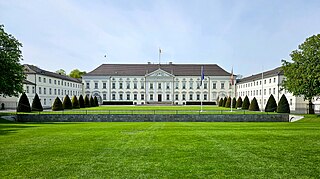
Bellevue Palace, located in Berlin's Tiergarten district, has been the official residence of the president of Germany since 1994. The schloss is situated on the banks of the Spree river, near the Berlin Victory Column, along the northern edge of the Großer Tiergarten park. Its name – the French for "beautiful view" – derives from its scenic prospect over the Spree's course.

William IV of Hesse-Kassel, also called William the Wise, was the first Landgrave of the Landgraviate of Hesse-Kassel. He was the founder of the oldest line, which survives to this day.

Margaret of Prussia was the youngest child of Frederick III, German Emperor, and Victoria, Princess Royal. She was also the younger sister of Emperor Wilhelm II and the granddaughter of Queen Victoria. She married Prince Frederick Charles of Hesse, the elected King of Finland, making her the would-be Queen of Finland had he not decided to renounce the throne on 14 December 1918. In 1926, they assumed the titles of Landgrave and Landgravine of Hesse. The couple had six sons and lost three of them in wartime, two during the First and one during the Second World War.
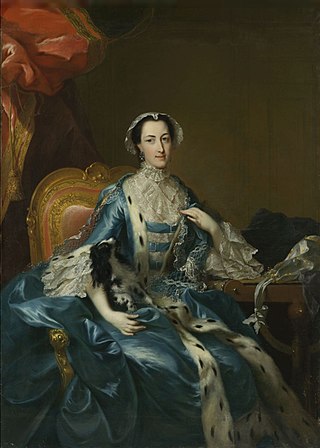
Mary of Great Britain was the second-youngest daughter of George II of Great Britain and his wife, Caroline of Ansbach, and Landgravine of Hesse-Kassel as the wife of Frederick II, Landgrave of Hesse-Kassel.
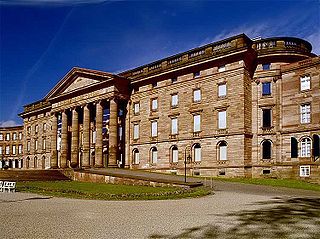
The Wilhelmshöhe Palace is a Neoclassical palace located in Bad Wilhelmshöhe, a part of Kassel, Germany. It was built for Landgrave Wilhelm (William) IX of Hesse in the late 18th century. Emperor Wilhelm II made extensive use of it as a summer residence and personal retreat.

Philipp, Prince and Landgrave of Hesse was head of the Electoral House of Hesse from 1940 to 1980.
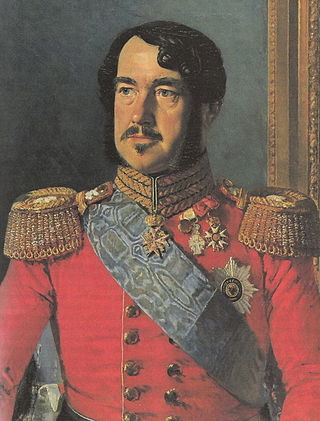
Prince William of Hesse-Kassel was the first son of Prince Frederick of Hesse-Kassel and Princess Caroline of Nassau-Usingen. He was titular Landgrave of Hesse-Kassel-(Rumpenheim) and for many years heir presumptive to the throne of Hesse-Kassel.

Maurice of Hesse-Kassel, also called Maurice the Learned or Moritz, was the Landgrave of Hesse-Kassel in the Holy Roman Empire from 1592 to 1627.
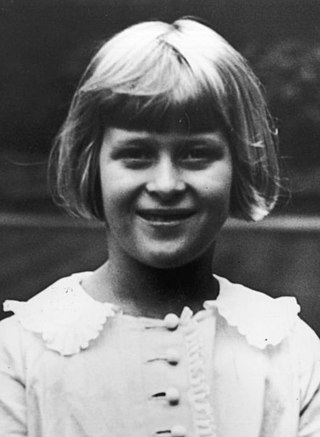
Princess Sophie of Greece and Denmark was by birth a Greek and Danish princess, as well as Princess of Hesse-Kassel and Princess of Hanover through her successive marriages to Prince Christoph of Hesse and Prince George William of Hanover. An elder sister of Prince Philip, Duke of Edinburgh, she was, for a time, linked to the Nazi regime.

Augusta of Prussia was a German salonist, painter, and Electress consort of Hesse by marriage to William II, Elector of Hesse. She was the third daughter and fifth child of Frederick William II of Prussia and Frederika Louisa of Hesse-Darmstadt.

Bergpark Wilhelmshöhe is a landscape park in Kassel, Germany. The area of the park is 2.4 square kilometres, making it the largest European hillside park, and second largest park on a hill slope in the world. Construction of the Bergpark, or "mountain park", began in 1689 at the behest of the Landgraves of Hesse-Kassel and took about 150 years. The park is open to the public today. Since 2013, it has been a UNESCO World Heritage Site because of its monumental Baroque architecture and its unique fountains and water features.

The Ottoneum in Kassel, Germany was the first theater building built in Germany and is now a museum of natural history.
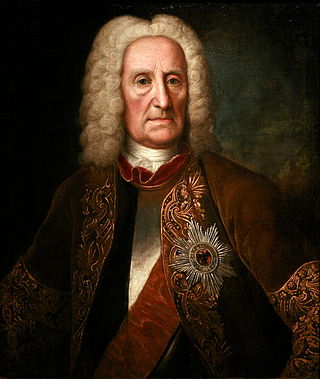
Johann Reinhard III of Hanau-Lichtenberg was the last of the counts of Hanau-Lichtenberg. He reigned from 1680 to 1736. From 1712 to 1736, he also reigned the County of Hanau-Münzenberg.

Victor of Hesse-Rotenburg was the last Landgrave of Hesse-Rotenburg and the Prince of Corvey from 1815 and Duke of Ratibor from 1821. His namesake was his second cousin King Victor Amadeus III of Sardinia.

The Fridericianum is a museum in Kassel, Germany. Built in 1779, it is one of the oldest public museums in Europe. Since 1955 the quinquennial art festival documenta has been centred on the site, with some artworks displayed on Friedrichsplatz, in front of the building.

The Kronprinzenpalais is a former Royal Prussian residence on Unter den Linden boulevard in the historic centre of Berlin. It was built in 1663 and renovated in 1857 according to plans by Heinrich Strack in Neoclassical style. From 1919 to 1937, it was home to the modern art collection of the National Gallery. Damaged during the Allied bombing in World War II, the Kronprinzenpalais was rebuilt from 1968 to 1970 by Richard Paulick as part of the Forum Fridericianum. In 1990, the German Reunification Treaty was signed in the listed building. Since then, it has been used for events and exhibitions.

Jean Paul du Ry was a French architect and Huguenot refugee who was responsible for a number of baroque buildings in Kassel, Hesse, Germany.

Dorothea Grimm was the mother to the "Brothers Grimm" Jacob and Wilhelm, and seven other children, including Ludwig Emil Grimm and Charlotte Amalie Grimm.

The Bellevueschloss or Schloss Bellevue was a palace complex in Kassel, Germany, which served as a residence of the Electors of Hesse-Kassel. It was located on the Schöne Aussicht, with view of the Karlsaue park. The building complex consisted of various 18th century palaces, which were combined at the start of the 19th century. In the 1930s, it housed the Landgrafenmuseum. For the most part, it was destroyed during the Second World War and not restored afterwards. With exception of the Bellevue Palace, nothing is left. Currently, the district court of Kassel stands on its location.


























